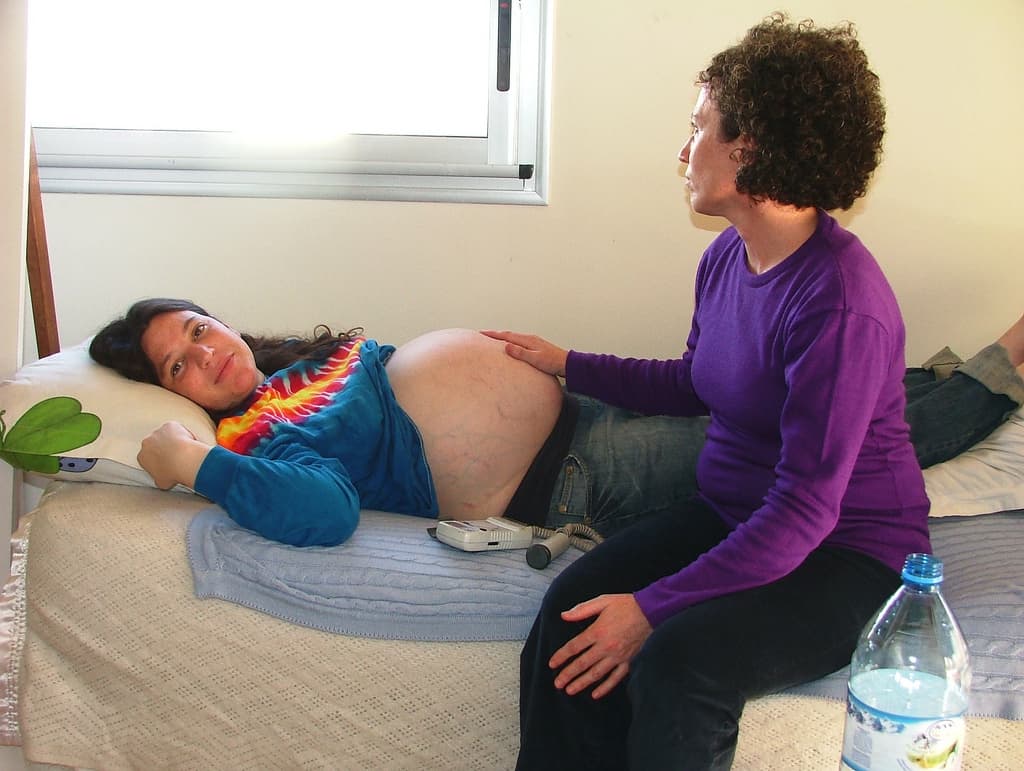Advertisement
Viewpoint: Doctors Respond To Home Births That End Up In Hospital
As physicians we are concerned about a recent post on CommonHealth — "What to Expect When You’re Birthing At Home: A Hospital C-Section (Possibly)" — that focuses on planned home births that end up in the hospital.
While we respect the right of women to labor and deliver in the environment of their choosing, requiring medical intervention in childbirth is neither shameful nor a moral failing. Life-threatening complications which, 100 years ago, would have meant a death sentence for mothers and babies, are now treatable and even preventable in the modern hospital maternity ward. Suggesting that women are unduly traumatized by transfer to and treatment in a medical facility does a disservice to the obstetricians, nurses, anesthesiologists, and neonatologists who work so hard to save these lives.
Here's an example of the kind of case that could possibly result from a home birth that goes awry. While on a routine morning on the obstetrics unit, the usual routine was interrupted by a phone call from the emergency room. A laboring mother was in distress and needed an emergency caesarean, and she was about to arrive into the trauma OR. Since caesareans are not normally performed in the emergency room trauma room, everyone dropped their plans and hurriedly prepared the trauma OR. One minute later a petite young woman on a stretcher crashed through the door along with the obstetrician. “Get the baby out of me!” she screamed, writhing and crying in agony as the team transferred her to the operating table. Between her moans and her desperate outbursts, she could barely understand the questions as the anesthesiologist tried to ascertain three things: did she have heart or lung problems, did she have allergies, and did she have any potential problems with her airway?

We had no other information to go by – no laboratory data, no history, not even her name. All we knew was the baby was in breech position (legs down, not head down) and was in distress. We had five seconds to decide how we would help to save the two lives in front of us. We told her as gently as we could (though it likely didn’t register with her at all) that she needed to breathe in oxygen for herself and her unborn child, that she would be unconscious for about an hour, and we would see her and her baby in the recovery room. Vaginal delivery is not the standard of care for breech presentations because of the significantly elevated risk of shoulder entrapment in the birth canal and stillbirth. Months after this case we all still wonder how we could have done better and what would’ve happened if she hadn’t arrived in time.
Thankfully, our team — the obstetricians, anesthesiologists, nurses and neonatologists — worked together successfully and both mother and child did well. We don't know for sure if this case began as a home birth, but it does represent the sorts of difficulties that we medical staffs wrestle with when a home birth becomes complicated and ends up at the hospital.
Childbirth always brings with it an element of danger. While everything usually goes right, when it goes wrong it usually does so quickly and seriously. To expect the idealized experience in every case is to deny reality. In 1900, when women were having the arguably blissful natural birth experience home birthers seek, the maternal mortality rate was more than 800 deaths per 100,000 births. According to the CDC, in 1997 that number was 7 per 100,000. This statistic, an upwards of 99 percent decrease in mortality rate, was not achieved by midwives and doulas with the latest technology in birthing balls and labor tubs. It was achieved through advances in science and medicine.
If a woman decides to try a home birth and encounters complications requiring medical intervention, her childbirth experience could well look and feel like major trauma. If it seems overwhelming, if it is scary, if things seem to be moving too fast, if the patient feels out of control, this is because the doctors and nurses are playing catch up, trying to stabilize a situation that has gone wrong long before they got involved. They don’t know the woman, they haven’t had a chance to have a calm and considered conversation about birth plans. If they had been involved in the care of the woman from the very beginning, things like pre-labor consultations and informed consent might have substantially alleviated such anxieties. These important steps are often disregarded in home births.
Hospital staff are trying to save at least one life, hopefully two. This doesn’t mean they are without compassion, far from it. The explanations, reassurances, and supportive touches from these caregivers are often lost on the patient, whose senses are understandably focused on her fear. Lowe says that “For many of us who give birth in today’s strained health care climate, there can be a major disconnect between childbirth as it’s idealized, and maternity care as it is actually practiced.” Idealized childbirth is dangerous, and medical professionals shouldn’t be vilified for saving a patient from a dangerous decision.
Cindy Ku is a staff anesthesiologist in Boston. Shirie Leng is a retired anesthesiologist and writer. She blogs at medicineforreal.wordpress.com.